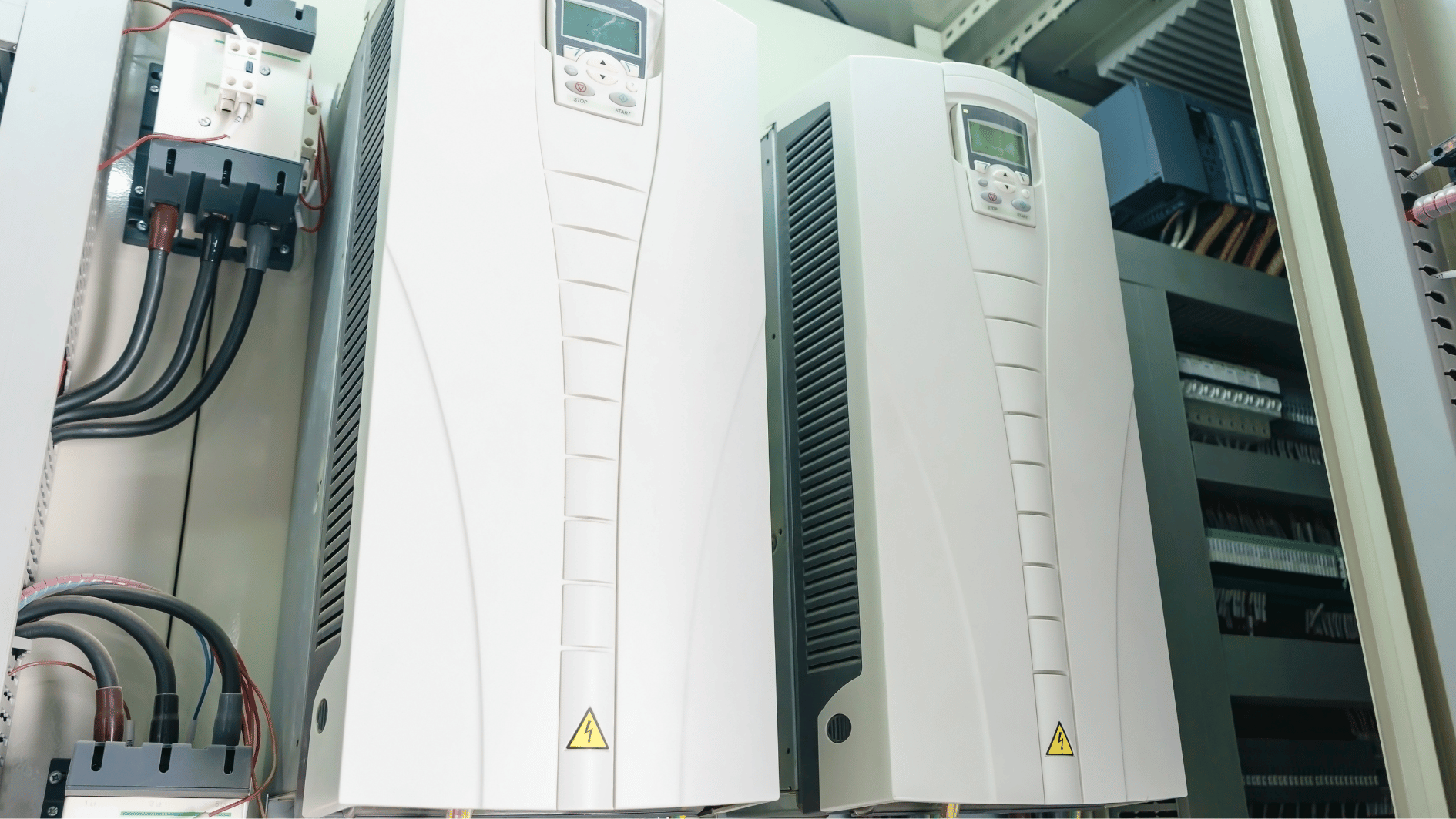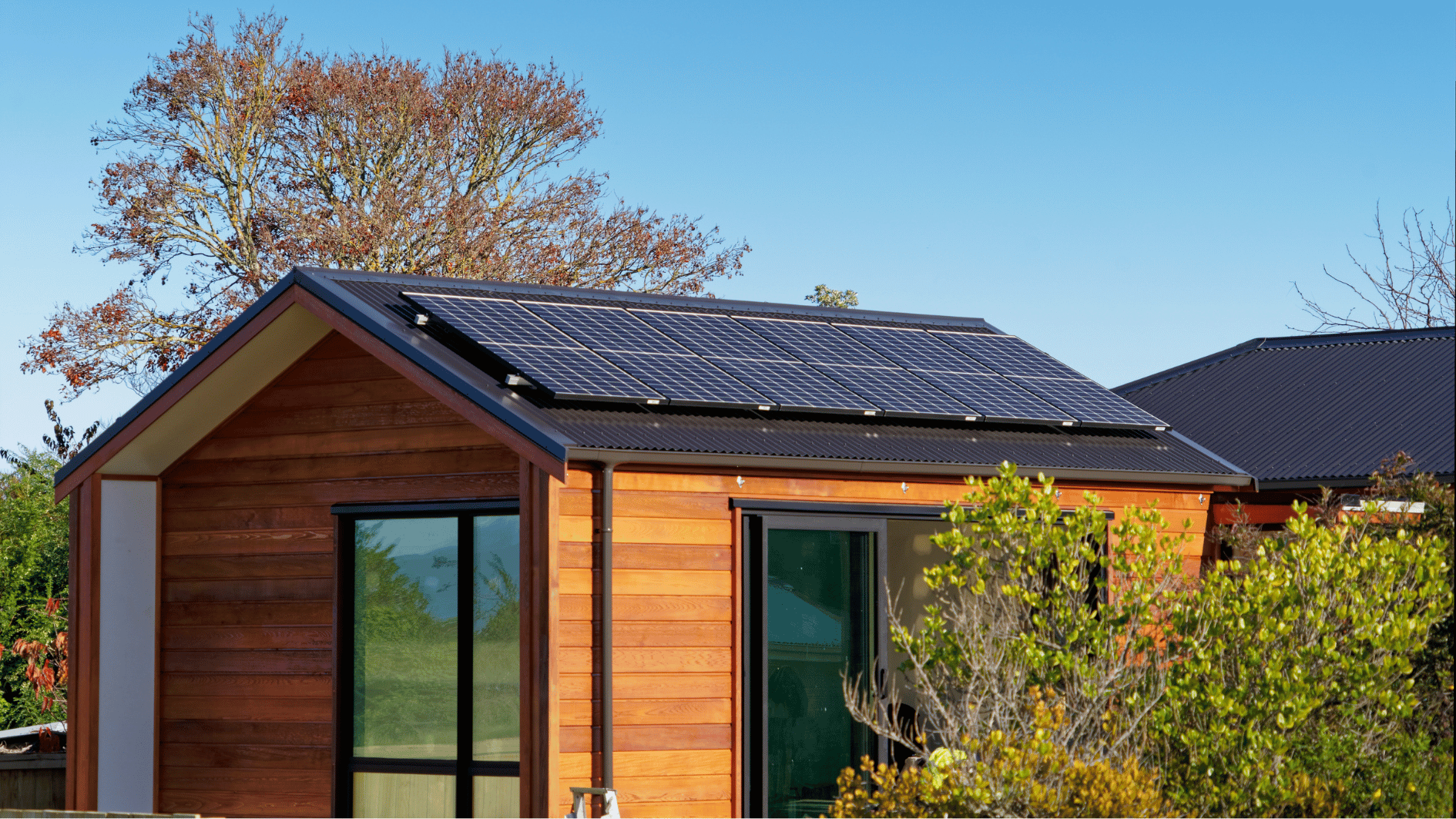Image source: Canva.com
In today’s highly connected world, the idea of going off the grid can be appealing. However, technically speaking, going off the grid means having no connection to your utility company and producing 100% of your electricity independently.
Installing solar panels doesn’t necessarily mean you’re off the grid. Most home solar systems are grid-tied, which is typically the more practical and advantageous choice. Staying connected to the grid ensures you have power during nighttime or cloudy days and allows you to benefit from programs like net metering, which can significantly enhance the value of your solar investment.
Going off-grid is usually more suitable for homes with low electricity consumption or those located in remote areas. If you fall into this category and are interested in achieving complete energy independence, let’s explore the types of equipment you’ll need and the associated costs.

Comparing Solar System Types: Grid-Tied, Off-Grid, and Hybrid
Understanding What It Means to Go “Off-Grid”
The term “off the grid” means living independently without relying on utility power. If you go off-grid, you must generate all your electricity on-site to meet your household needs. This approach is most suitable for small homes in rural areas with unreliable grid access.
Why Going Solar Doesn’t Necessarily Mean You’re Off-Grid
While installing solar panels provides a degree of energy independence, it doesn’t necessarily mean you’re off the grid. Most residential solar systems in the United States remain grid-connected because solar panels rely on sunlight to generate power. Being grid-connected ensures you have access to electricity during nighttime or cloudy days.
Achieving true off-grid status with a solar panel system is possible but requires a larger setup with multiple solar batteries for energy storage, which can be costly. To create an off-grid solar system, you’ll generally need the following components:

- Solar panels
- Solar inverters
- Wiring and cables
- Mounting equipment
- PWM or MPPT charge controller
- Energy storage (solar batteries or a backup generator)
- Safety equipment (safety disconnects, grounding equipment, surge protection)
Why Grid-Tied Solar Panel Systems
The majority of residential solar panel systems are connected to the utility grid for several good reasons. Solar panels can’t produce electricity continuously, so being grid-connected ensures you have power during the night and on cloudy days. Although energy storage systems can provide some level of backup, even most solar-plus-storage setups are more reliable and cost-effective when tied to the grid.
Energy Storage Requirements for Off-Grid Systems
Going off-grid with solar power often requires substantial energy storage, which can be impractical and expensive for a whole home. Typically, you would need around 12 solar batteries to achieve full off-grid status. Additionally, off-grid systems need specific types of batteries capable of “islanding,” or functioning independently from the grid to recharge daily.

How Inverters Play a Key Role in Off-Grid Solar Power Systems
Limited Equipment Options
Many high-quality solar panels are not available for retail purchase. To access these panels, you generally need to work with a professional solar installer who has connections with distributors. Without this access, you’re restricted to off-grid solar kits, which are usually of lower quality. For a high-power output system, collaborating with a qualified solar installer is the best option.
Complexity of Installation
Installing a solar energy system is complex and requires professional expertise. DIY installations, particularly for off-grid systems, can lead to system errors and safety risks. Proper installation by a skilled professional is crucial for ensuring system reliability and safety.
Inability to Participate in Net Metering
If you live in an area with net metering, keeping your solar panels connected to the grid is beneficial. Net metering allows you to send excess electricity generated on sunny days to the grid, earning credits on your electric bill. These credits can offset the cost of electricity when your panels aren’t producing enough power. Without a grid connection, you miss out on these cost-saving programs, which can significantly impact your solar investment’s payback period and overall value.
Reasons to Consider Going Off-Grid

Living in a Remote Area with No Grid Access
In remote areas with no access to the grid, smaller and less expensive solar and storage systems can often suffice. Homes designed for off-grid living typically have lower energy needs and minimal electrical systems, making them suitable for such setups. However, living off-grid might require adjusting your lifestyle to cope with periods without electricity.
Seeking Independence from Your Utility Company
If you disagree with your utility’s practices or want to avoid additional costs associated with grid connection, going off-grid can offer a sense of autonomy. This choice can align with principles of self-sufficiency, reduce reliance on fossil fuels, or simply allow you to circumvent extra fees related to connecting your solar system to the grid.
Unreliable Electricity Supply from Your Utility
If your utility’s power supply is inconsistent, going off-grid might be more about improving reliability than severing ties with the utility. Installing solar batteries with islanding capabilities can keep your home powered during severe weather or grid outages. For many, this approach enhances home resiliency without the high costs of a full off-grid system.

What Happens to Your Solar Power System During a Power Outage?
The Cost of Going Off-Grid
Going off-grid with solar power is a significant and multifaceted investment that requires careful planning and understanding of your energy needs. Here’s a breakdown of the key considerations and costs involved in transitioning to an off-grid solar setup:
1. Calculate Your Electricity Use
Before designing your system, it’s essential to understand your household’s electricity consumption. This involves estimating your daily usage by reviewing your electric bills or calculating the wattage of your appliances.
Electric Bill
Your monthly electric bills will show your total consumption, which you can divide by the number of days in the billing cycle to find your daily usage. It’s important to average this over several months to account for seasonal variations.
Appliance Load
Calculate the wattage of each appliance and multiply it by the hours used daily. This gives you a rough estimate of your daily energy consumption, which can be fine-tuned using a home energy monitor for greater accuracy.
2. Determine How Many Batteries You Need
Battery storage is crucial for an off-grid system, as it allows you to store excess solar energy for use when the sun isn’t shining. The number of batteries required depends on your daily electricity consumption and the usable capacity of the batteries.
Electricity Consumption
The average American household uses around 30 kWh per day. To cover this usage, especially accounting for conversion losses, you’ll need batteries with a slightly higher capacity.
Usable Capacity
Not all the stored energy is usable due to system losses. Typically, three batteries are sufficient for an average household for a single day, but additional storage may be needed for longer periods of low sunlight or increased energy use.
3. Design a Solar Panel System
Once your energy needs and battery storage requirements are clear, you can design your solar panel system. This includes selecting the appropriate size and type of panels to meet your energy goals. The system must be robust enough to generate sufficient power to charge your batteries and meet daily consumption.
4. Add Up the Costs
Going off-grid generally involves higher costs compared to grid-tied systems, primarily due to the need for significant battery storage and specialized equipment. Here’s a general breakdown:
Solar Panels
$10,000 – $30,000
The cost depends on the size, efficiency, and number of panels needed to meet your energy demands.
Battery Storage
$5,000 – $20,000+
High-capacity batteries, like the Tesla Powerwall, are essential for storing energy.
Inverters and Control Systems
$2,000 – $10,000
These components convert the electricity and manage energy distribution within your home.
Backup Generator (Optional)
$2,000 – $10,000+
A generator provides additional security during extended periods of low sunlight.
Installation and Labor
$5,000 – $15,000
Professional installation costs can vary based on system complexity and local labor rates.
Permits and Inspections
$500 – $2,000
Local regulations may require permits, adding to the overall cost.
Miscellaneous Costs
$1,000 – $5,000
This includes wiring, mounting hardware, and other essential components.
Total Estimated Cost
Low End: $25,500
High End: $82,000
* All estimates before any federal or state incentives or rebates.
Additional Considerations
Maintenance Costs
Although solar panels and batteries generally require minimal maintenance, it’s wise to budget for periodic inspections and potential replacements.
Energy Efficiency
Implementing energy-efficient appliances and practices can reduce your energy consumption, lowering the overall cost of your solar system.
Tax Credits and Incentives
Many regions offer tax credits, rebates, or other financial incentives that can significantly reduce the cost of going off-grid.
Going off-grid with solar power is a substantial investment, offering the benefits of long-term energy savings and independence from fluctuating energy prices. By carefully evaluating your energy needs and the associated costs, you can make an informed decision about whether off-grid living is the right choice for your home.
Disclaimer: The information provided in this article is for general informational purposes only and is based on data and research from the National Renewable Energy Laboratory (NREL), U.S. Department of Energy (DOE), Solar Energy Industries Association (SEIA), Tesla, and other solar providers. While every effort has been made to ensure the accuracy and completeness of the information, it is not intended as professional advice and should not be relied upon as such. Costs, regulations, and technology may vary by location and individual circumstances. We recommend consulting with a qualified professional or local solar provider to obtain tailored advice and an accurate estimate for your specific needs.





